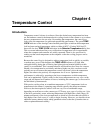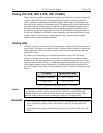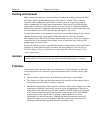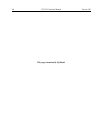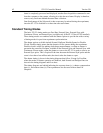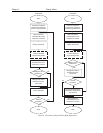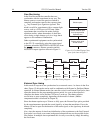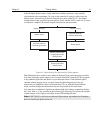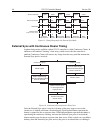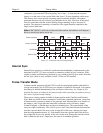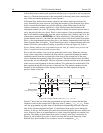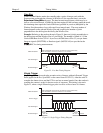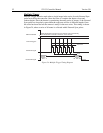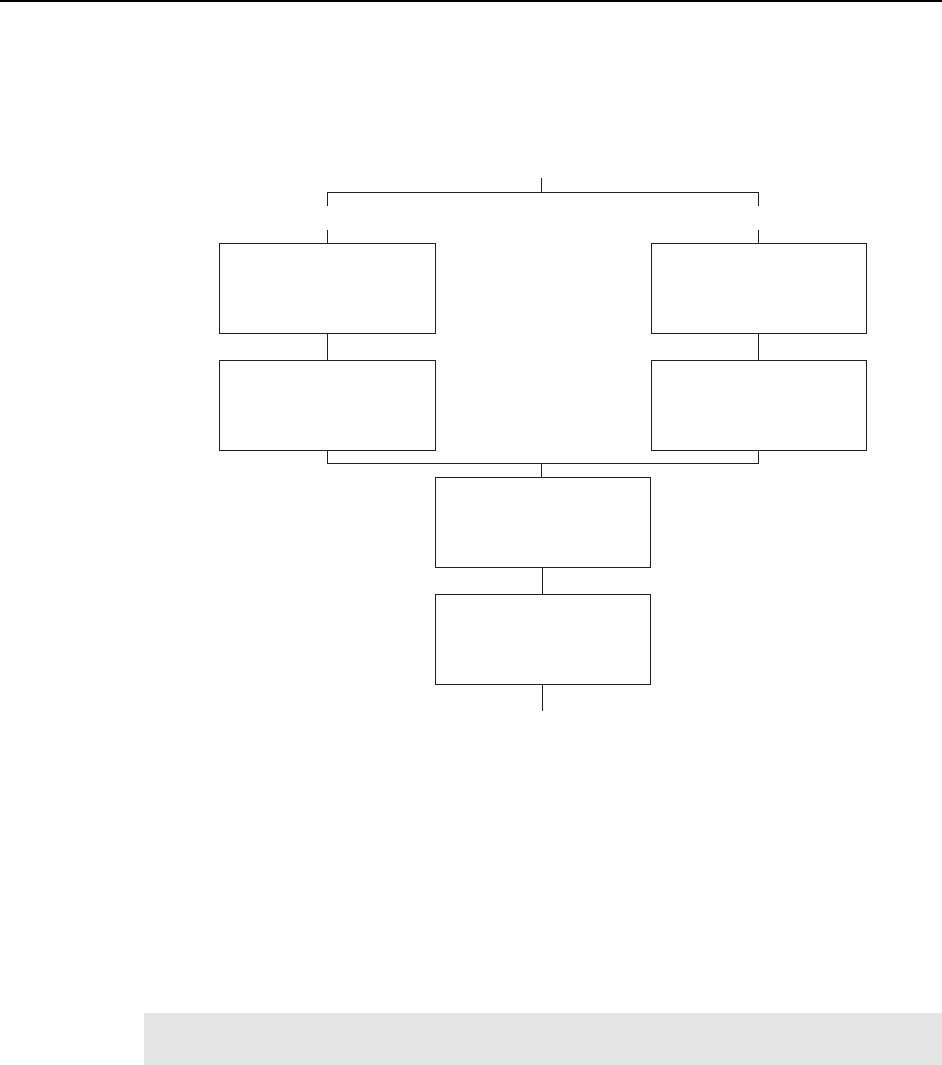
Chapter 5 Timing Modes 45
In the PreOpen Shutter mode, on the other hand, shutter operation is only partially
synchronized to the experiment. As soon as the controller is ready to collect data, the
shutter opens. Upon arrival of the first External Sync pulse at the ST-133, the shutter
remains open for the specified exposure period, closes, and the CCD is read out. As soon
as readout is complete, the shutter reopens and waits for the next frame.
Shutter opens
Shutter remains open
for preprogrammed
exposure time
System waits while
shutter closes
Shutter opens
Controller waits for
External Sync pulse
Controller waits for
External Sync pulse
(shutter preopen)
(shutter normal)
Figure 12. Chart showing Two External Sync Timing Options
The PreOpen mode is useful in cases where an External Sync pulse cannot be provided
5-28 msec before the actual signal occurs. Its main drawback is that the CCD is exposed
to any ambient light while the shutter is open between frames. If this ambient light is
constant, and the triggers occur at regular intervals, this background can also be
subtracted, providing that it does not saturate the CCD. As with the Normal Shutter
mode, accurate background subtraction may not be possible for the first frame.
Also note that, in addition to signal from ambient light, dark charge accumulates during
the "wait" time (t
w
). Any variation in the external sync frequency also affects the amount
of dark charge, even if light is not falling on the CCD during this time.
Note: If EXT SYNC is still active at the end of the readout, the hardware will interpret
this as a second sync pulse, and so on.



